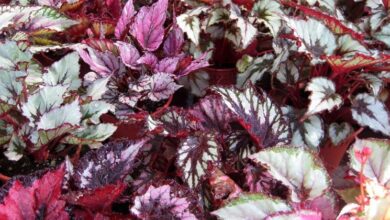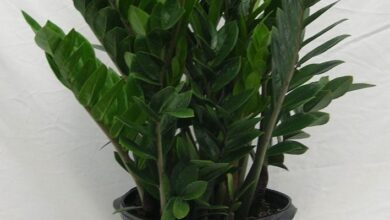Weeping fig care: tips for growing weeping figs outdoors
Weeping figs ( Ficus benjamina ) are elegant trees with thin, grey trunks and abundant green leaves. The care of Weeping figs depends on whether they are grown indoors or outdoors. Learn more about caring for Mourning Figs outdoors.
Information about the weeping fig plant
Growing Weeping Figs indoors and growing Weeping Figs outdoors are completely different efforts. It’s almost as if indoor and outdoor weeping figs are different species.
Indoors, Mourning Figs are beautiful container plants that rarely grow higher than 2.5 to 3 metres. Outdoors, however, the trees grow to huge specimens (up to 100 feet high and 50 feet wide) and are often used for hedges.
That said, Mourning Figs only grow outdoors in USDA Plant Resistance Zones 10 and 11. That’s why most Mourning Figs are grown as houseplants. However, if you are fortunate enough to live in one of these warm tropical regions, you should know that you can care for Mourning Figs outdoors.
Weeping fig care outdoors
As container houseplants, weeping figs grow rather slowly,
but on the outside, it’s a different story. This plant can quickly become an arboreal monster if it’s not pruned, which it tolerates well. In fact, as far as pruning the weeping fig tree, it easily accepts severe pruning, so don’t hesitate to remove any dead foliage when you see it. If you wish to prune the Weeping Fig to form or reduce the size of the tree, you can remove up to a third of the growth of the outer canopy at a time.
Taking care of the weeping figs indoors is a matter of choosing an appropriate location. Because its roots spread as fast as it grows, the tree can damage the foundation. Therefore, if you choose to grow it outdoors, plant it at a good distance from the house, at least 30 feet away.
If you read about the weeping fig tree, you will see that the plant prefers well-drained, moist, silty soil and thrives in a place where the sunlight is bright and indirect indoors. Outdoors it is much the same, with a few exceptions. The tree can grow well in full sun or shade.
Once established, creeping figs are fairly tolerant to drought and heat. They are said to be resistant to 30 F. (-1 C.) but a single severe frost can cause serious damage to the tree. However, when grown in areas with milder winters, most recover as long as the roots are protected. Adding a 2 to 3 inch layer of mulch can help.
Problems associated with outdoor creeping figs include freezing temperatures, severe drought, high winds and insect pests, especially thrips. Dealing with crying figs can be difficult, as problems are often difficult to diagnose. Whatever the problem, the tree reacts in the same way: it drops its leaves. Most experts agree that the primary cause of leaf drop in weeping figs is excessive watering (especially indoors). A good rule of thumb is to keep the soil on your tree moist but never wet, by moving it back in winter.
You can provide the tree with liquid fertilizer about once a month during the growing season, but outside the growing season it is not usually necessary or advisable because of its faster growth.


